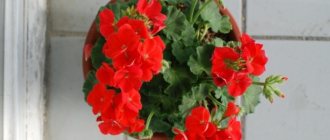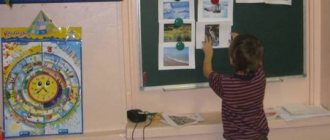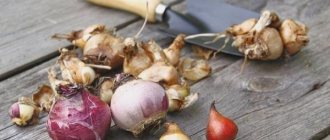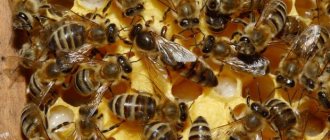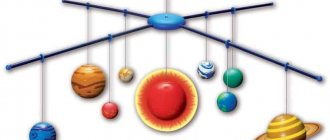Open lesson for children of the preparatory group “Indoor plants”
Natalya Medvedeva
Open lesson for children of the preparatory group “Indoor plants”
Summary of a lesson on speech development on the topic:
«Houseplants»
in
the preparatory group
Teacher Medvedeva N.A.
Novosibirsk 2018
Topic: " Indoor plants "
The purpose of GCD: the development of coherent speech in children .
Expand and clarify the activation of the dictionary on the topic “ Indoor plants ”
(
plant , pot, stem, leaf, watering, watering can, cactus, aloe, coleus, clean, geranium, care, spray, green).
Guessing riddles. Develop coherent speech, visual attention and perception of creative imagination. Improve the syntactic structure of speech (complex sentences with words because)
.
To foster activity, initiative, independence, love and respect for indoor plants .
Board, subject pictures on the topic, medium-sized rubber ball, container with pencils, cactus
.
Notes of speech therapy classes.
- Organizing time.
- Conversation (activation of vocabulary, development of dialogical
thinking) - Exercise “Show and Tell” ( developing the ability to understand
verbal instructions and form verb forms) - Exercise “The fourth odd one” (development of auditory
attention, logical thinking) - Physical education minute “We are plants” (coordinating speech with
movement, relieving emotional stress and aggression) - Exercise “Name the word” (activating the dictionary,
improving the syllable structure) - Exercise “Compare and Tell” (development of coherent speech,
visual attention) - Solving the isograph “Cactus”
- Hatching “Cactus” (development of fine motor skills)
- Bottom line. (evaluation of children's work)
( introduction to the topic of the lesson)
Children enter the office and stand near the tables.
The one who can name any indoor plant will sit down. (children call
and sit down)
Why are these plants called indoor plants?
Can they survive on the street?
These plants come from hot countries, the tropics. In their homeland it is very
hot and light or damp. When we start growing plants at home, we must create
they have such conditions so that the plants feel at home.
How should you care for indoor plants? ( water, sprinkle
wipe, loosen, fertilize)
Why do this?
What tools are needed for this?
Anton, water the ficus. (the named child stands up and performs
action)
Anton, what are you doing? ( I water the ficus)
Misha, what is Anton doing? ( waters the ficus)
Thank you, Anton, sit down. Katya, what did Anton do? ( watered
ficus)
Other actions for caring for plants are performed similarly.
Listen carefully. Which word is superfluous? Why?
Fern, ficus, nettle, violet.
Rose, lily, chlorophytum, tulip.
Geranium, aloe, ficus, ranunculus.
Fern, chlorophytum, cactus, ficus.
Violet, begonia, geranium, fern.
Imagine that you are small plants. Now I will water
you, and you - to grow, rise up, reach for the sun. When I leave, the plants will be
wither, dry up, drop leaves. You need to slowly, slowly relax, sit down, lower your
hands.
The children continue to sit in a circle. The speech therapist passes the ball in a circle.
Name indoor plants whose names have 2 syllables.
Geranium…
The speech therapist places images of violets and ficus on the board.
Look carefully. How do these plants differ from each other?
(children find differences and make up a comparative story)
Aloe and geranium, cactus and fern are compared in a similar way.
Look at this picture. What do you think is the word here?
hid? Why do you think so? What helped you solve this riddle?
Look at your drawings. What do they show?
Shade your cacti according to the pattern.
What do your cacti need to make them look like real ones?
(thorns
). Draw them.
What do cacti sometimes do? ( bloom).
Let your cacti too
will bloom.
ОL>
- What did we talk about today?
Which houseplant did you like best?
Did you like the way you worked? Which child’s work do you want today?
did you like it?
Which task did you enjoy the most?
We wish you success!
Synopsis of an educational lesson in the preparatory group "Indoor plants"
Maria Smirnova
Synopsis of an educational lesson in the preparatory group "Indoor plants"
Synopsis for a lesson on cognition : “ Indoor plants ”
.
Teachers: Smirnova M. A., Anfimova E. I.
1. Expand children's knowledge about indoor plants .
2. Foster a caring attitude towards nature.
1. Introduce several types of indoor plants .
plant care skills .
3. Teach to name the plant and its main parts.
4. Develop research skills.
Lesson on the natural world in the preparatory school group “Houseplants and their care”
Transcript
1 MDOU “Kindergarten 101” Lesson on the natural world in the school preparatory group “Indoor plants and their care” Conducted by: teacher Bulanova M.A. g.o. Saransk 2017
2 Objectives: 1. Introduce children to indoor plants (ficus, violet, chlorophytum.) 2. Teach children to distinguish plants by appearance. 3. Improve skills in planting and caring for them. 4. Activate children's vocabulary. Visual materials and equipment: Indoor plants, pictures of flowers, watering can, cloth, wooden stick for loosening the soil, water, oilcloth, magnifying glass. Progress of the lesson: 1. Children sit on chairs. There are flowers on the tables in the group. — Today we will talk about indoor plants. (Knock on the door, the hero Dunno comes in) Dunno: - Hello guys, did I end up in a flower city? - Dunno. flowers grow not only in the garden, but also in the house. -Guys, explain to Dunno what flowers are called indoors. (Which grow at home, in the room). -Now we will tell Dunno about indoor plants. Telling riddles: A bush has grown in a tub And the leaf is wide and thick, like leather, Tightly folded, The elder trunk is like rubber
3 (ficus) - Dima S. will tell you about the ficus. - The large-leaved ficus is bush-like, reaching the height of a small tree. With very large leathery, shiny, green leaves. There is a pot on the window. It contains the most wonderful flower. Purple, elegant, alluring aromas. Children's answers (violet) - Arthur M. will tell you about the violet. The violet has a shortened stem. The leaves are oval or round, collected in a rosette. The violet blooms nine months a year. Does not require bright lighting or large pots. Green pod spiders hang from the mountain on cobwebs. Children's answers (chlorophytum) -Yaroslav S. will tell about chlorophytum. The birthplace of the flower is South Africa. The popular name is beard. It grows in both brightly lit and slightly shaded windows. It is undemanding to air humidity and temperature. -Now, together with Dunno, we will look at the violet. Touch the leaves. Trace them around the edge with your finger.
4 -What do the edges of the leaves look like? -Which violet leaves are smooth or fluffy? (The edges of the leaves look like a wave, the leaves feel fluffy to the touch) Now, through a magnifying glass, we will look at the hairs on the leaves of the violet. The hairs on violet leaves help retain moisture in the leaves. Violet leaves are collected in a rosette. Let's find these sockets. (Children examine the flower through a magnifying glass, pay attention to the rosettes.) The violet needs to be watered in a tray; the violet cannot be given a bath, since the drops left reflect the sun’s rays and burn the leaves. Physical education minute On the window in pots (squat down) Flowers rose (on their tiptoes, raising their arms up) Reached towards the sun (spread their arms out to the sides, palms up)
5 They smiled at the sun (turn to the right, hands on their belts to the left) Towards the sun the leaves (put their palms together above their heads) Turn the leaves (palms open the buds) Unfold the buds They will drown in the sun. -Indoor plants are green friends at home. -What are they for? (For beauty, comfort, aromatization, air purification.) - That's right, flowers really create coziness in a room, make the interior beautiful and attractive. -The most useful indoor plant is chlorophytum; within a day, chlorophytum kills almost all harmful bacteria and toxins accumulated in the room. - Dunno is wondering, what needs to be done to prevent the plants from dying? (Take care of them) -Let the guys tell and show Dunno how to care for plants. (You need to water the plants with water at room temperature, in summer the flowers are watered in the evening, and in winter in the morning. 1 child waters the flowers, a stick is needed to loosen the earth, 2 child loosens the earth,
6 leaves, a damp cloth is needed to wipe dust from large ones 3 the child takes a damp cloth and begins to wipe the leaves - Why do plants need soil? (Flowers are planted in it) -Why are indoor plants placed on the windowsill? (They need light to grow) -Why aren’t indoor plants taken outside in the fall and winter? (Plants need warmth)
7 -Why do they loosen the soil? (So that the plant can breathe) -Today, guys, we will plant a violet. Let's loosen the soil in the pot. Let's make a small indentation with a spatula. Place violet leaves. Let's water it and put it on the windowsill. (Children plant a flower and water it.)
8 E. Blaginina’s poem about indoor flowers will be read by Danila N. There’s a real garden on my window! Large Fuchsia earrings are hanging. A narrow date is climbing - The leaves are fresh. And the Russian palm tree has leaves like knives. A modest flame flared up with embers.
9 All under the hair of the Cactus is a stump. Tits are jumping under my window. The birds rejoice; it is pleasant for them. Look at this, Nice window. Where in winter there is summer, where there are a lot of flowers. Our lesson has come to an end. What did we do in class? (They guessed riddles, talked about flowers, learned how to properly care for indoor plants, planted a flower) - Let's always remember that these beautiful plants live next to us, grow, make us happy and need love and care. Dunno: -Guys, I had a lot of fun in your lesson. -I will definitely plant an indoor flower at home.
Summary of the ecology lesson “Houseplants” in the preparatory group
Stepanova Ksenia
Summary of the ecology lesson “Houseplants” in the preparatory group
TASKS: to promote the formation of generalized ideas about the differentiated needs of indoor plants for moisture : some plants - with soft , thin leaves - require a lot of moisture - they come from damp places, they need to be watered often, others - with dense, thick leaves , stems - drought-resistant, they come from arid places, so they should be watered less often than other plants (thick stems, leaves, sometimes thorns instead of leaves - this is the adaptation of drought-resistant plants to storing water and spending little of it);
P r e d i v e r w o r k.
– A series of observations of indoor plants and work in a corner of nature;
– Excursions to the ecology room and conversations about indoor plants .
Lesson summary “Our indoor plants”
MKDOU Buturlinovsky kindergarten No. 11
Lesson summary for the preparatory group
"Our indoor plants"
(planting indoor plants)
Educator: Bolgova A.P.
Target:
Expand and systematize children's knowledge about indoor plants.
Tasks:
To consolidate knowledge about the structure of plants, about caring for them, about pests of indoor plants, about the vegetative propagation of indoor plants.
Cultivate an interest in caring for plants and a love for them.
Develop logical thinking, the ability to analyze, generalize using a visual and practical method - modeling.
Material:
Indoor plants, planting material, bowls with soil, sticks, watering can with water, oilcloths, aprons, cellophane, cards - models, game character - ladybug.
Preliminary work:
Conversations on “houseplant pests”, vegetative propagation of plants, preparation of planting material.
Progress of the lesson
Vos-l:
Guys, today a letter arrived at our kindergarten, look how big the envelope is! Our address is written on it. And it came from Dunno.
Guys, the letter is “alive”. Guess who hid in the envelope?
I'm asking a riddle
The back is red
There are black circles on it
There are three legs on each side.
who is this?
(children's answers)
Vos-l:
Right! Ladybug. What class of animals does the ladybug belong to?
(children's answers)
Vos-l:
hush, she's sleeping, don't wake her. Why is she sleeping?
(children's answers)
Vos-l:
In winter, the ladybug falls asleep. Like all insects, it hides under the bark of trees, in the cracks of houses, under pebbles.
Ladybug:
(wakes up) where am I?
Children:
Ladybug, you're in kindergarten.
Ladybug:
Hello children! My friend Dunno sent me to you. Listen to what he wrote (reads the letter).
"Dear Guys! I got into trouble. All my indoor plants began to die. I can't figure out why. I decided to write you a letter to your kindergarten. In the envelope with the letter I enclosed my assistant, as you already guessed who. You tell my ladybug how you can help me so that my plants begin to grow again. Sincerely, your old friend Dunno.”
Ladybug:
But trouble befell my green friends, houseplants. They have enemies.
Didactic game: “Friend or foe”
(children must identify pairs of two cards - name and image, and determine who is a friend of indoor plants and who is an enemy).
Ladybug:
Yes, I help control pests.
Vos-l:
At first glance, a ladybug seems like a harmless bug, but in reality it is a terrible predator! She busily runs along the branches and leaves, quickly moving her little legs in search of food. Its food is aphids, tiny but very harmful insects that suck the sap from plants. She has a good appetite, she can eat up to 200 aphids in a day, and her larva is even more voracious, and why is the Ladybug called that?


